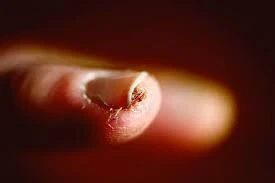Nail fungus, medically known as onychomycosis, is a common condition affecting millions worldwide. It is caused by fungal infections that thrive in warm, moist environments such as sweaty shoes or damp socks. If left untreated, nail fungus can lead to thickened, brittle nails with a yellowish or brownish discoloration, potentially causing pain and discomfort.
Identifying Nail Fungus Symptoms

Symptoms of Nail Fungus
Nail fungus typically starts as a small white or yellow spot under the tip of the nail. As the infection progresses, the nail may become thicker, brittle, and develop crumbling edges. It can spread to other nails and cause pain or a foul odor in severe cases.
Common Treatments for Nail Fungus


1. Over-the-Counter Antifungal Treatments
Mild cases of nail fungus can often be treated with over-the-counter antifungal nail creams, ointments, or nail polishes. These products typically contain ingredients like clotrimazole or terbinafine, which help eradicate the fungus and promote healthy nail growth.
2. Prescription Medications
For more stubborn infections, prescription oral antifungal medications such as fluconazole or itraconazole may be prescribed by a healthcare professional. These medications work systemically to target the fungus from within, requiring several months of treatment for optimal results.
3. Nail Removal Surgery
In severe cases where the nail fungus does not respond to other treatments, surgical nail removal may be considered. This procedure involves removing the infected nail to allow a healthy new nail to grow in its place. It is typically reserved for cases where the infection is particularly painful or recurrent.
Preventative Measures to Avoid Nail Fungus
1. Proper Foot Hygiene
Maintaining good foot hygiene is essential in preventing nail fungus. Wash your feet regularly with soap and water, and dry them thoroughly, especially between the toes.
2. Wear Proper Footwear
Choose shoes made of breathable materials that allow air circulation, and avoid wearing damp socks or shoes for extended periods. Consider alternating shoes to allow them to dry completely between uses.
3. Use Antifungal Powders or Sprays
Apply antifungal powders or sprays to your feet and inside your shoes to help prevent fungal growth. This is particularly important if you frequently wear closed-toe shoes or participate in activities that cause feet to sweat excessively.
Natural Remedies for Nail Fungus
1. Tea Tree Oil
Tea tree oil has natural antifungal properties and can be applied directly to the affected nails using a cotton swab. It may help reduce the severity of nail fungus over time.
2. Vinegar Soaks
Soaking affected nails in a mixture of vinegar and water may help inhibit fungal growth and restore pH balance to the nails. Use equal parts vinegar and water and soak for 15-20 minutes daily.
Conclusion
Nail fungus is a common and treatable condition that can affect anyone. Early detection and treatment are crucial in preventing the spread of infection and restoring nail health. From over-the-counter remedies to prescription medications and preventive measures, there are effective solutions available to manage nail fungus effectively. If you suspect you have nail fungus, consult with a healthcare professional to determine the best treatment plan for your needs.


